Can Bleach Kill Bed Bugs?
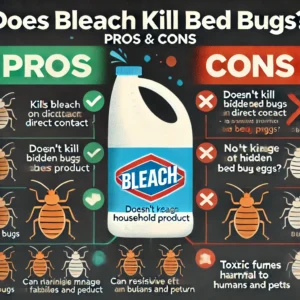
Bed bugs are one of the most persistent household pests, and many homeowners turn to DIY solutions like bleach to get rid of them. But does bleach really kill bed bugs? The answer is yes—but with serious limitations.
Bleach is a powerful chemical that kills bed bugs on direct contact by breaking down their outer shell and suffocating them. However, it has significant drawbacks:
- Limited reach: Bleach only works on bugs that are directly sprayed, meaning hidden bugs remain unaffected.
- No effect on eggs: Bed bug eggs have a protective shell that makes them resistant to bleach.
- No residual protection: Once bleach dries, it has no lasting effect, allowing bed bugs to return.
- Health risks: Bleach fumes can irritate the lungs, skin, and eyes, especially in enclosed spaces.
How to Use Bleach to Kill Bed Bugs (Safely)
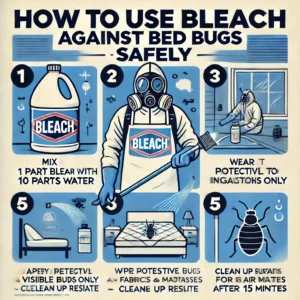
If you still want to use bleach as a temporary measure, follow these steps to minimize risks and maximize effectiveness:
Dilute the Bleach:
Mix 1 part bleach with 10 parts water. Never use undiluted bleach, as it’s too harsh and increases health risks.
Protect Yourself:
Wear gloves, a mask, and eye protection to avoid skin and respiratory irritation.
Open windows and doors to ensure proper ventilation.
Apply Directly to Visible Bed Bugs:
Use a spray bottle to target bed bugs you can see. Avoid spraying large areas, as this can release harmful fumes.
Focus on hard, non-porous surfaces like bed frames, headboards, and baseboards.
Avoid Fabrics and Mattresses:
Bleach can damage fabrics and mattresses, and it won’t penetrate deeply enough to kill hidden bugs.
Clean Up Thoroughly:
Wipe down treated surfaces with water after 10-15 minutes to remove bleach residue. Dispose of any dead bed bugs carefully to avoid spreading eggs or live bugs.
Why Bleach Isn’t Enough While bleach can kill bed bugs on contact, it’s not a long-term solution.
Where Do Bed Bugs Hide
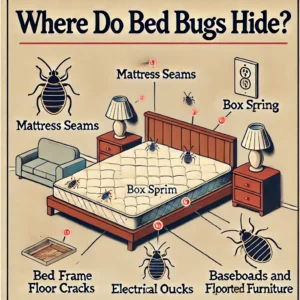
Bed bugs are experts at hiding in: Cracks in walls and furniture. Electrical outlets and baseboards. Mattresses and box springs.
Dangers of Using Bleach to Kill Bed Bugs
While bleach might seem like a quick fix, it comes with several risks:
- Toxic fumes: Inhaling bleach vapors can cause respiratory issues, especially for children and pets.
- Surface damage: Bleach can stain or weaken fabrics, furniture, and flooring.
- Ineffective for deep infestations: Bed bugs hide in cracks, crevices, and inside mattresses, where bleach cannot reach.
If you choose to use bleach, always dilute it properly, wear protective gear, and ensure proper ventilation. However, due to its limitations, bleach is not a recommended solution for bed bug control.
Why Professional Treatment Works Best
Unlike bleach, professional bed bug treatments are designed to eliminate both adult bugs and eggs. The most effective methods include:
- Heat treatments: Kills all life stages of bed bugs instantly.
- Insecticide treatments: Targeted solutions with long-lasting effects.
- Integrated pest management: A combination of chemical and non-chemical strategies to ensure complete eradication.
Final Thoughts: Is Bleach an Effective Bed Bug Solution?
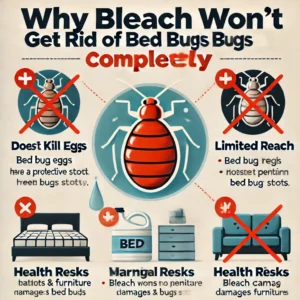
While bleach can kill bed bugs on contact, it is not a reliable or safe long-term solution. It cannot penetrate deep hiding spots, does not kill eggs, and poses health risks. For complete bed bug removal, House falls offer safer, more effective solutions.
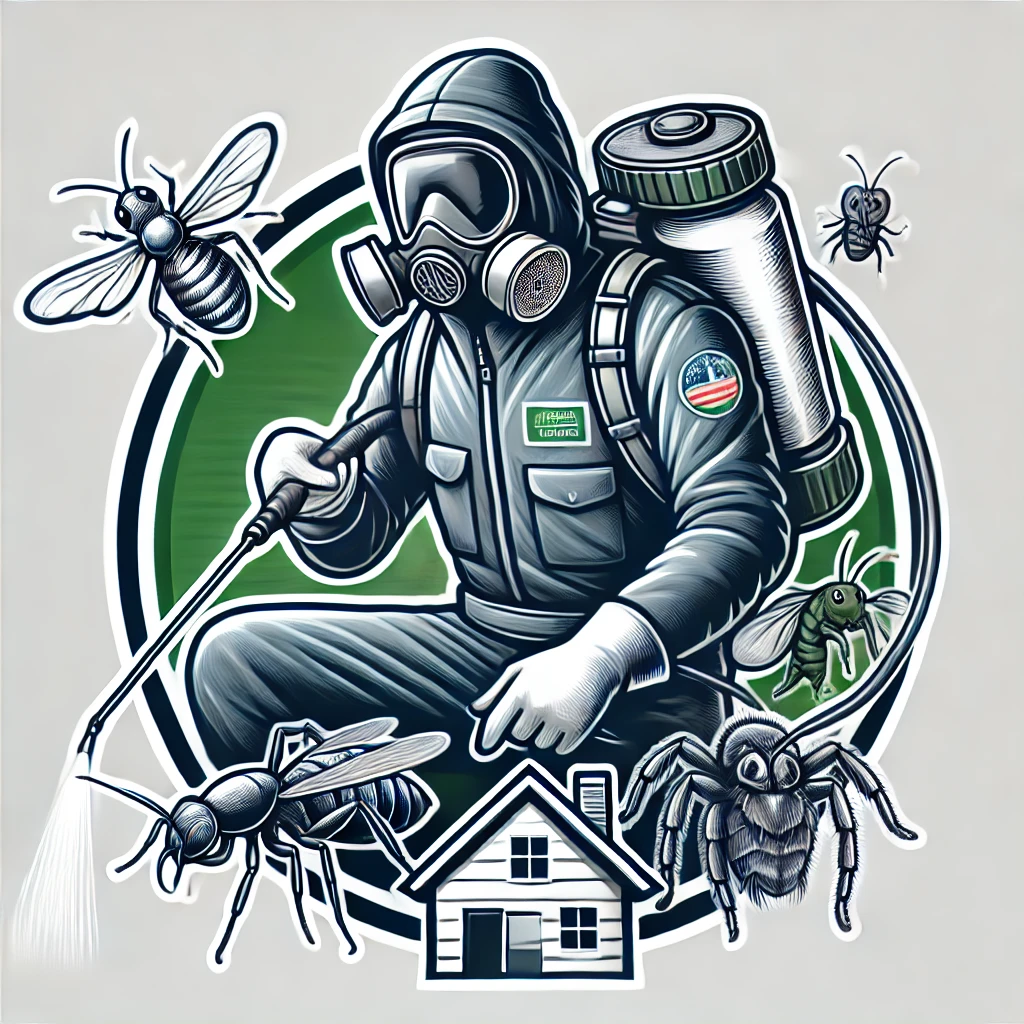
Leave a Reply
You must be logged in to post a comment.